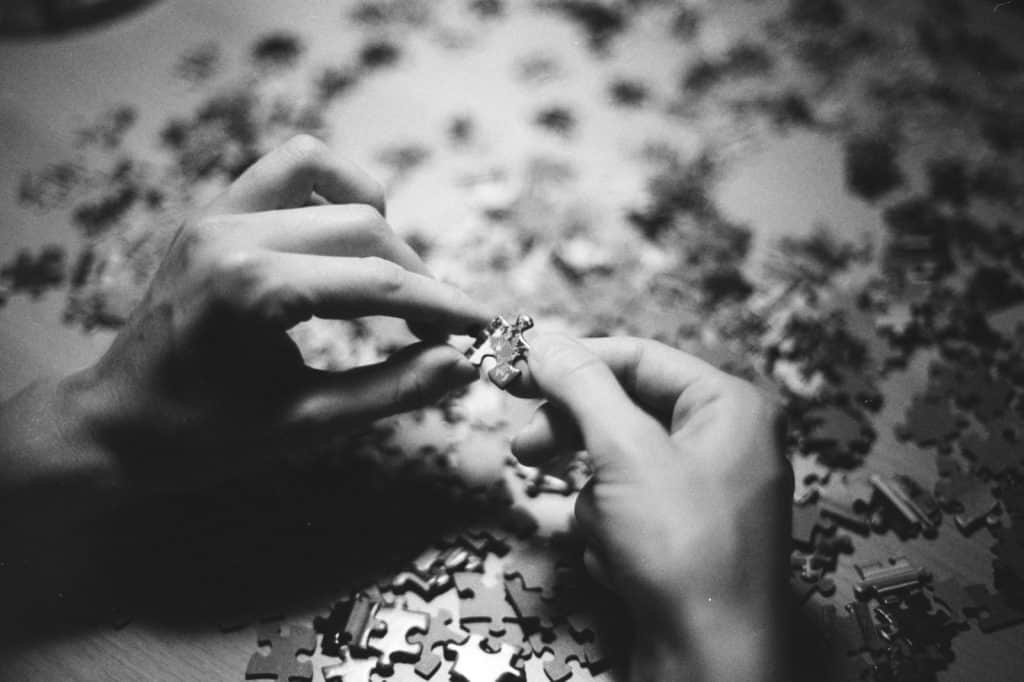Putting together puzzles is entertaining and gives you a sense of accomplishment, right? Hanging that exquisite design, unique painting, or your favorite iconic person and place on your wall makes you feel even more triumphant. It is also essential to know how to glue a puzzle for framing to the right way so you don’t damage it. Luckily, we have the inside scoop for you.

How to Glue a Puzzle for Framing
The first step in framing a jigsaw puzzle is to finish assembling it, which you can do by flattening the pieces together to fit perfectly into the frame.
If a few pieces from your favorite puzzle ever pop out of place, you can try pressing them down. Another way to fix the problem is by using a rolling pin to make the entire puzzle stay flat against the wall.
Clean the Surface
Before gluing your Puzzle, make sure the surface is clean from any debris or dust. Hanging a frame with a spotless puzzle will create a professional and polished look.
Apply Glue to the Puzzle
By using puzzle glue, you’re giving your puzzling passion project the best chance to withstand the test of time–and house guest play. Not only will the adhesive hold each piece in place better than if left alone, but it will also add an extra layer of protection against water damage or imperfect table surfaces.
Our experts recommend placing a sheet of thin plastic, parchment paper, or wax paper underneath your work-in-progress before adding any liquid glue
for good measure. You can use a store-bought puzzle adhesive like mod podge; however, heat-sensitive adhesives and simple puzzle glues savers work just as well when it comes time to frame your completed masterpiece.
Using materials such as parchment or wax paper at the back of the puzzle will help to glue it. If you don’t, the puzzle pieces might stick to the table or any other surface, which could ruin it.
Parchment paper is treated with silicone, which makes it non-stick. It can also resist heat and grease. These properties will ensure the puzzle pieces don’t get stuck so you can transfer them to the frame carefully. Use a piece of cardboard or a card with a straight edge to get rid of any excess glue.
After the puzzle is painted, you must wait until it is completely dry. A single coat generally needs 20 minutes to dry and will remain fairly solid.
You can add another coat if you want, just make sure it’s flat and glued down well. We also suggest waiting an hour before framing it. If possible, wait a little longer until it dries completely. Also, avoid too much glue.
Find the Right Frame
When you’re choosing a frame for your puzzle, make sure to select one that is the appropriate size. Otherwise, it would defeat the purpose of having a frame in the first place!
You don’t want to use double-sided packing tape every time you frame a puzzle, so here’s an easy workaround: get a poster board or foam board for extra support. You can also add matting if you want.After that, hang your puzzle on the wall and enjoy! Now repeat with your next puzzle.
Final Thoughts on How to Glue a Puzzle for Framing
By framing your glued puzzle, not only will preserve the finished puzzle for an extended amount of time, but it is also an interesting way to show off your completed artwork by hanging them on the wall instead of storing them away in dusty old boxes.
Follow these steps to avoid any disasters. Make sure the surface is clean before doing anything. The frame you select matters too- wobbly frames won’t cut it. And finally, be patient! Let the glue dry completely before attaching it to your wall.

